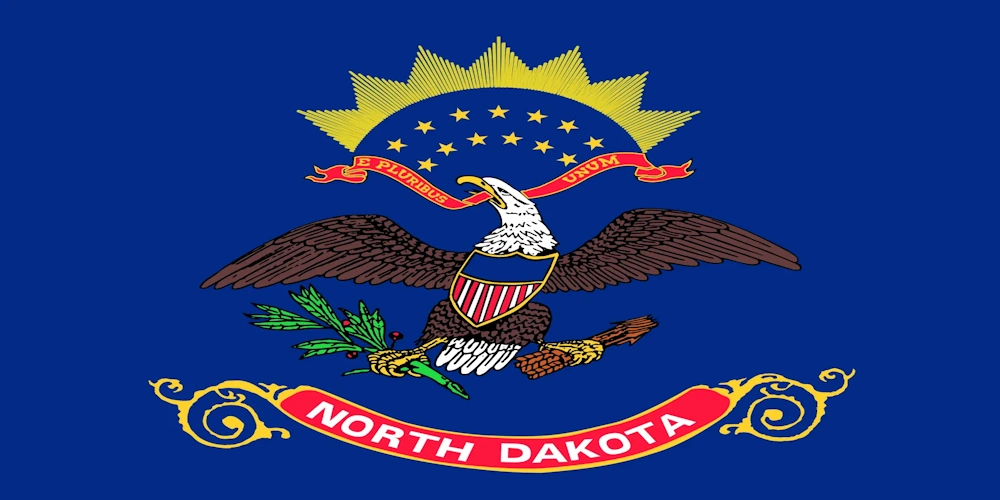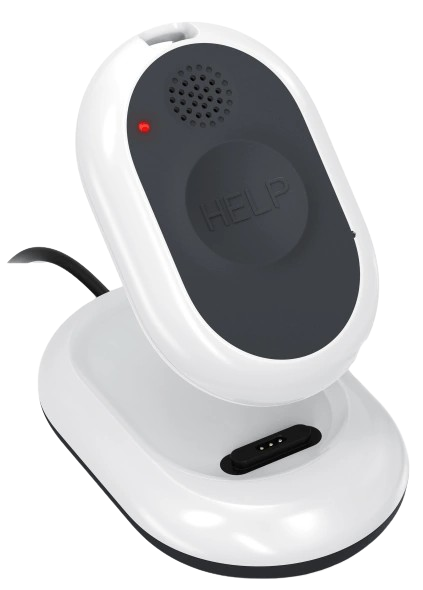From oil field technicians in the Bakken region to home health workers in Fargo, North Dakota is home to many lone workers operating in remote, isolated, or high-risk environments. These individuals often face elevated safety risks due to limited oversight and delayed access to emergency assistance. Employers in North Dakota must take appropriate steps to protect workers who perform their duties alone.
Unlike some states, North Dakota does not operate its own OSHA-approved occupational safety and health plan. This means all workplace safety regulations in North Dakota fall under the jurisdiction of federal OSHA (Occupational Safety and Health Administration). Employers must follow OSHA’s standards and general safety requirements to keep lone workers safe, even though there is no regulation written specifically for isolated or solo work.
On This Page
Our Guide To Lone Worker Safety Policy And Legislation In North Dakota
Because North Dakota relies entirely on federal OSHA regulations, employers must adhere to federal standards that apply to all types of workplaces. While OSHA does not currently have a specific regulation for lone workers, the General Duty Clause requires all employers to provide a work environment free from recognized hazards that could cause serious harm or death.
Employers are expected to assess the hazards associated with lone work—such as medical emergencies, environmental exposures, workplace violence, and machinery accidents—and take steps to mitigate those risks. In industries like oil and gas, agriculture, and healthcare, where lone work is common, failure to plan adequately could lead to serious liability and preventable accidents.
Employers can access guidance, training, and inspection support from OSHA's Bismarck Area Office, which serves businesses and workers throughout the state.
How North Dakota Defines A Lone Worker
While there is no official OSHA or state definition specific to “lone worker,” the term generally refers to employees who work without direct supervision and who may be unable to call for help in an emergency. In North Dakota, this can include workers in remote or rural areas, as well as those working odd hours or in isolated sections of facilities.
Examples of lone workers in North Dakota include:
- Oil and gas field technicians
- Agricultural workers and equipment operators
- Utility maintenance personnel
- Home healthcare aides
- Security staff on overnight shifts
- Snowplow and road maintenance workers during winter operations
Employers should identify these roles and ensure adequate protections are in place.
Employing A Lone Worker In North Dakota
Employers have a legal and ethical responsibility to recognize the risks associated with lone work and take measures to ensure worker safety. While OSHA does not mandate specific lone worker procedures, a proactive approach can help prevent injuries, improve response times, and demonstrate compliance with federal expectations.
Best practices for protecting lone workers include:
- Risk Assessments: Analyze the hazards associated with specific jobs, environments, and locations.
- Emergency Preparedness: Develop and communicate clear protocols for medical emergencies, equipment failure, and natural hazards.
- Communication Tools: Use radios, phones, or lone worker safety apps to maintain real-time contact.
- Scheduled Check-Ins: Establish mandatory check-in procedures and escalation protocols.
- Worker Training: Ensure employees are trained to identify hazards and respond appropriately in emergencies.
These safety strategies not only improve worker outcomes but also help employers avoid potential fines or legal exposure under OSHA regulations.
Learn How You Can Protect Your Employees With Loneworker.com

With Loneworker.com you can be equipped with the knowledge and the means to protect your employees and protect your business. Contact us today to learn more about how Loneworker.com can protect you and your employees.
How The Safe Lone Worker App Can Protect North Dakota Lone Workers And Employers
The Safe Lone Worker app is designed to support real-time monitoring and emergency response for employees working alone in the field, on-site, or at home. With features like panic alerts, fall detection, timed check-ins, and GPS tracking, it provides peace of mind for both workers and supervisors.
Whether managing a team of oil field operators in Williston or home health aides in Grand Forks, the Safe Lone Worker app is a smart and scalable solution for employers committed to safety and compliance with OSHA expectations.
North Dakota Lone Worker Policies
North Dakota is a federally regulated OSHA state, meaning there is no state-run occupational safety and health program. All worker safety policies and enforcement are handled by federal OSHA. While there is no standalone regulation focused exclusively on lone workers, employers are expected to meet their responsibilities under the General Duty Clause, which requires the identification and mitigation of any known workplace hazards.
This guide is intended for general informational purposes and does not constitute legal or regulatory advice. For the most accurate and up-to-date information, consult with OSHA or a qualified safety consultant.
North Dakota Lone Worker Resources
OHS Contact Centre
- 1-866-415-8690
CDC / NIOSH
- 800-232-4636

Affordable Monitoring For Lone Workers In North Dakota

-
 Monitoring Your Employees' Safety
Monitoring Your Employees' Safety
-
 GPS Tracking And Monitoring
GPS Tracking And Monitoring
-
 Man Down Panic Alerts
Man Down Panic Alerts
-
 24/7 Protection Anywhere
24/7 Protection Anywhere
Lone Worker Legislation
Lone Worker Safety Policies And Legislation By State
-
 Alabama State Safety Policies And Legislation
Alabama State Safety Policies And Legislation
-
 Alaska State Safety Policies And Legislation
Alaska State Safety Policies And Legislation
-
 Arizona State Safety Policies And Legislation
Arizona State Safety Policies And Legislation
-
 Arkansas State Safety Policies And Legislation
Arkansas State Safety Policies And Legislation
-
 California State Safety Policies And Legislation
California State Safety Policies And Legislation
-
 Colorado State Safety Policies And Legislation
Colorado State Safety Policies And Legislation
-
 Connecticut State Safety Policies And Legislation
Connecticut State Safety Policies And Legislation
-
 Delaware State Safety Policies And Legislation
Delaware State Safety Policies And Legislation
-
 Florida State Safety Policies And Legislation
Florida State Safety Policies And Legislation
-
 Georgia State Safety Policies And Legislation
Georgia State Safety Policies And Legislation
-
 Hawaii State Safety Policies And Legislation
Hawaii State Safety Policies And Legislation
-
 Idaho State Safety Policies And Legislation
Idaho State Safety Policies And Legislation
-
 Illinois State Safety Policies And Legislation
Illinois State Safety Policies And Legislation
-
 Indiana State Safety Policies And Legislation
Indiana State Safety Policies And Legislation
-
 Iowa State Safety Policies And Legislation
Iowa State Safety Policies And Legislation
-
 Kansas State Safety Policies And Legislation
Kansas State Safety Policies And Legislation
-
 Kentucky State Safety Policies And Legislation
Kentucky State Safety Policies And Legislation
-
 Louisiana State Safety Policies And Legislation
Louisiana State Safety Policies And Legislation
-
 Maine State Safety Policies And Legislation
Maine State Safety Policies And Legislation
-
 Maryland State Safety Policies And Legislation
Maryland State Safety Policies And Legislation
-
 Massachusetts State Safety Policies And Legislation
Massachusetts State Safety Policies And Legislation
-
 Michigan State Safety Policies And Legislation
Michigan State Safety Policies And Legislation
-
 Minnesota State Safety Policies And Legislation
Minnesota State Safety Policies And Legislation
-
 Mississippi State Safety Policies And Legislation
Mississippi State Safety Policies And Legislation
-
 Missouri State Safety Policies And Legislation
Missouri State Safety Policies And Legislation
-
 Montana State Safety Policies And Legislation
Montana State Safety Policies And Legislation
-
 Nebraska State Safety Policies And Legislation
Nebraska State Safety Policies And Legislation
-
 Nevada State Safety Policies And Legislation
Nevada State Safety Policies And Legislation
-
 New Hampshire State Safety Policies And Legislation
New Hampshire State Safety Policies And Legislation
-
 New Jersey State Safety Policies And Legislation
New Jersey State Safety Policies And Legislation
-
 New Mexico State Safety Policies And Legislation
New Mexico State Safety Policies And Legislation
-
 New York State Safety Policies And Legislation
New York State Safety Policies And Legislation
-
 North Carolina State Safety Policies And Legislation
North Carolina State Safety Policies And Legislation
-
 North Dakota State Safety Policies And Legislation
North Dakota State Safety Policies And Legislation
-
 Ohio State Safety Policies And Legislation
Ohio State Safety Policies And Legislation
-
 Oklahoma State Safety Policies And Legislation
Oklahoma State Safety Policies And Legislation
-
 Oregon State Safety Policies And Legislation
Oregon State Safety Policies And Legislation
-
 Pennsylvania State Safety Policies And Legislation
Pennsylvania State Safety Policies And Legislation
-
 Rhode Island State Safety Policies And Legislation
Rhode Island State Safety Policies And Legislation







